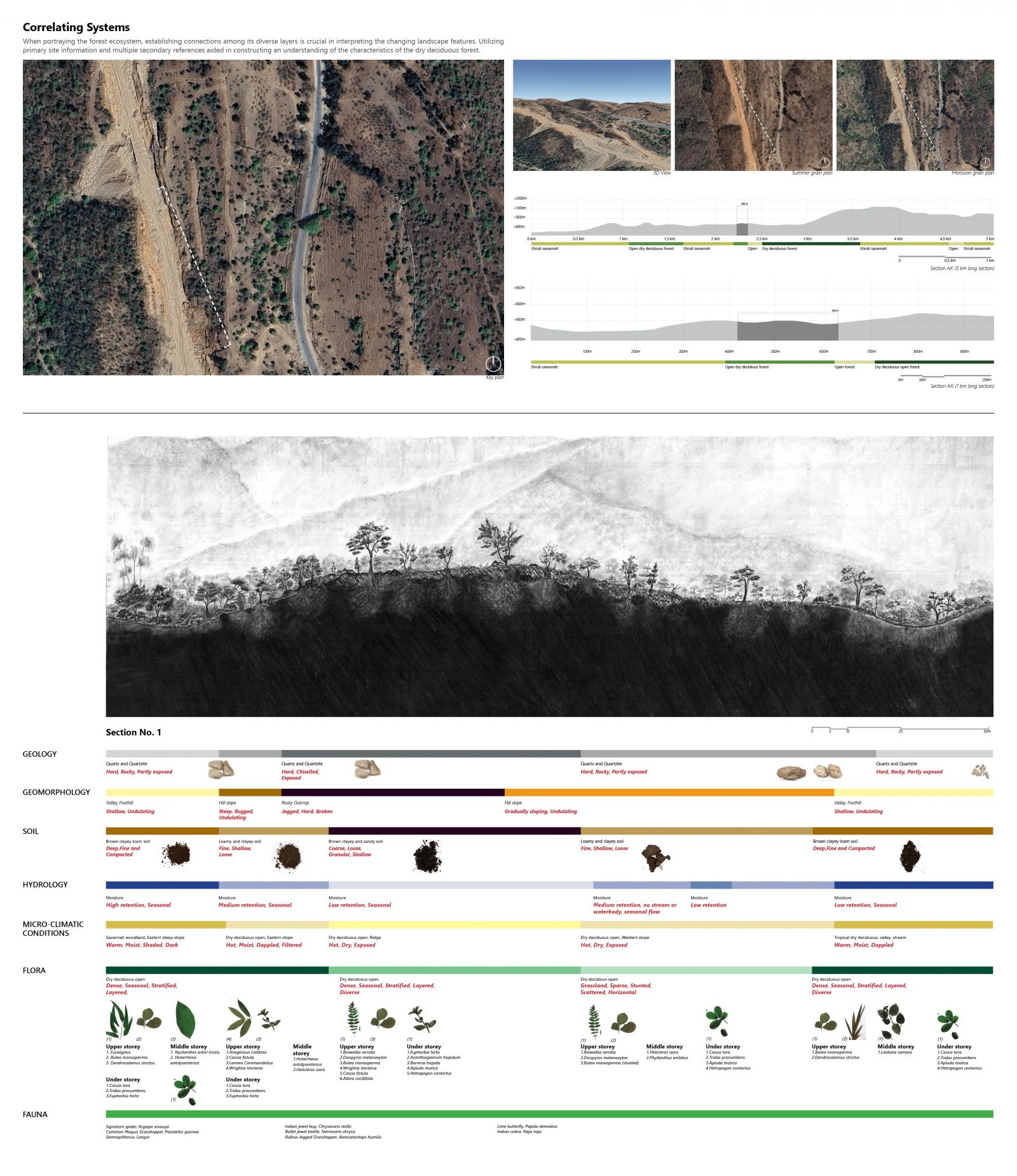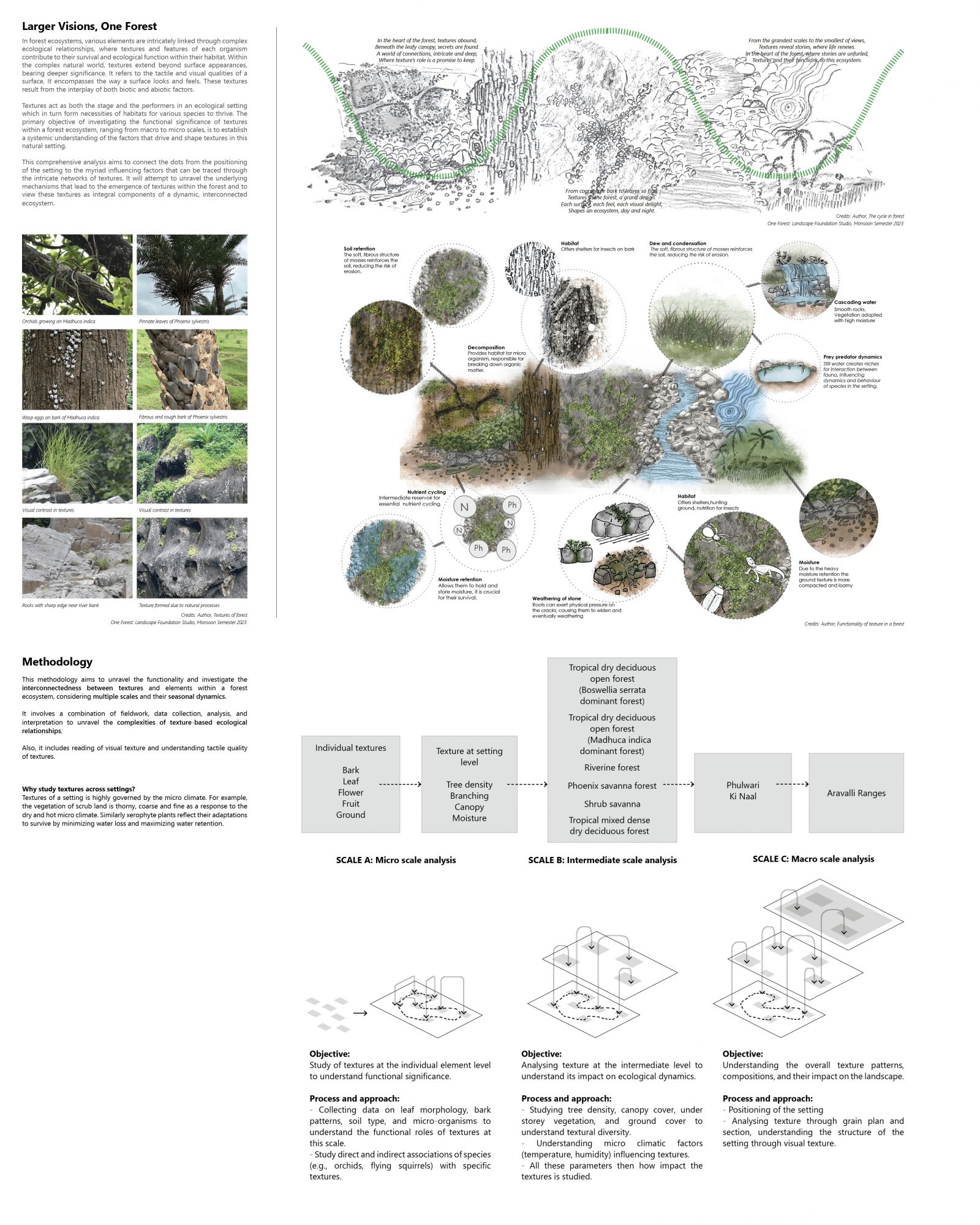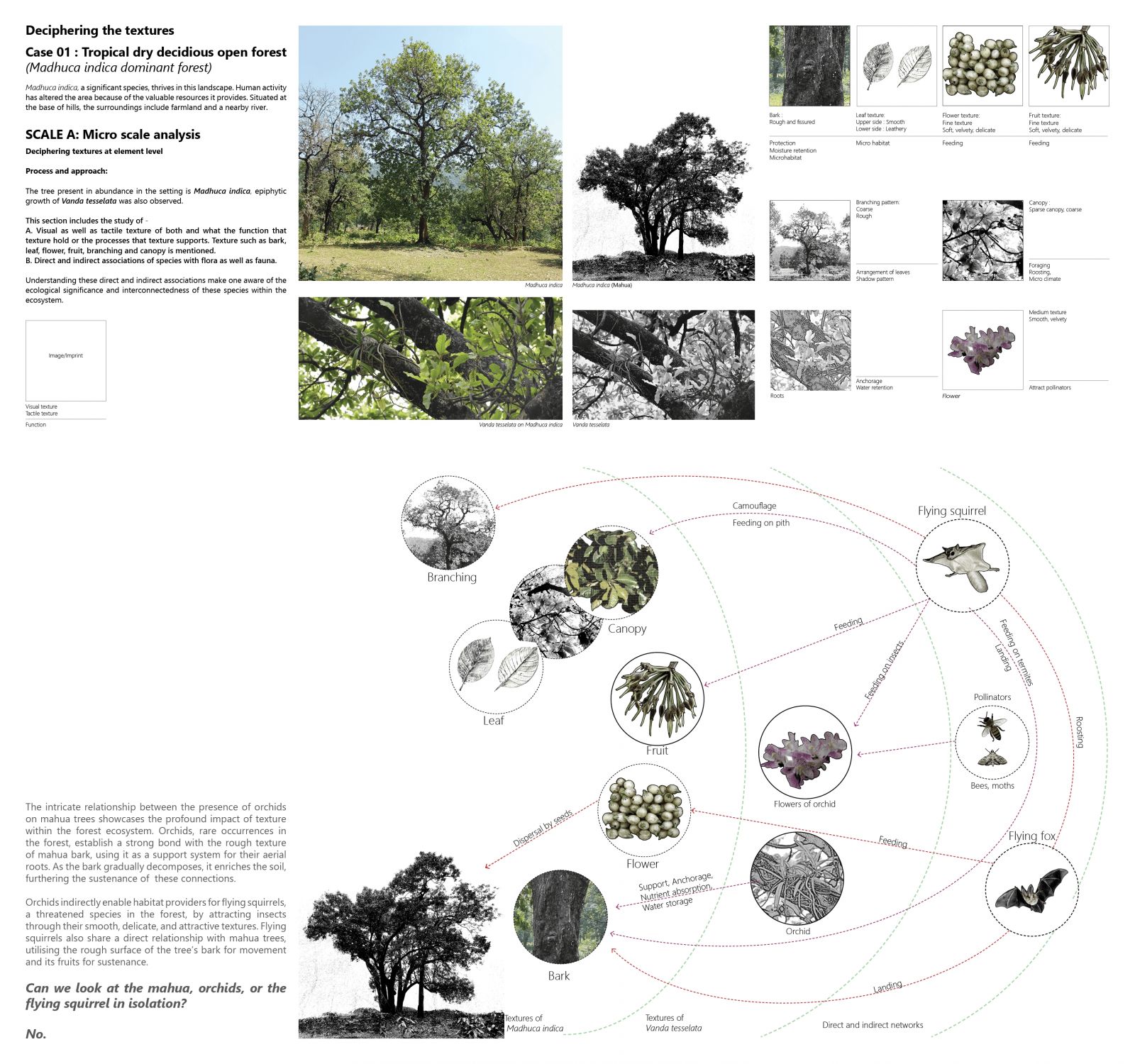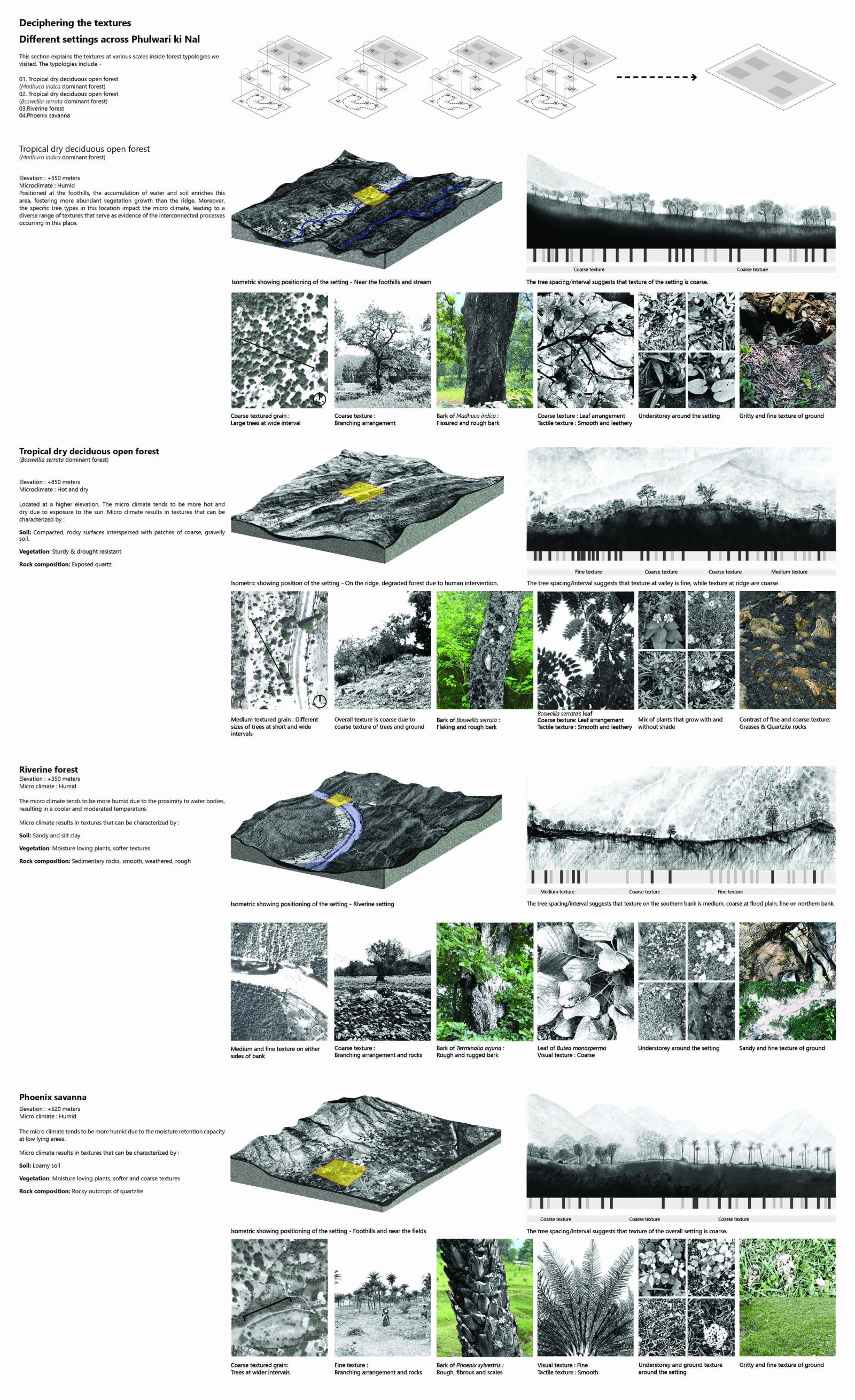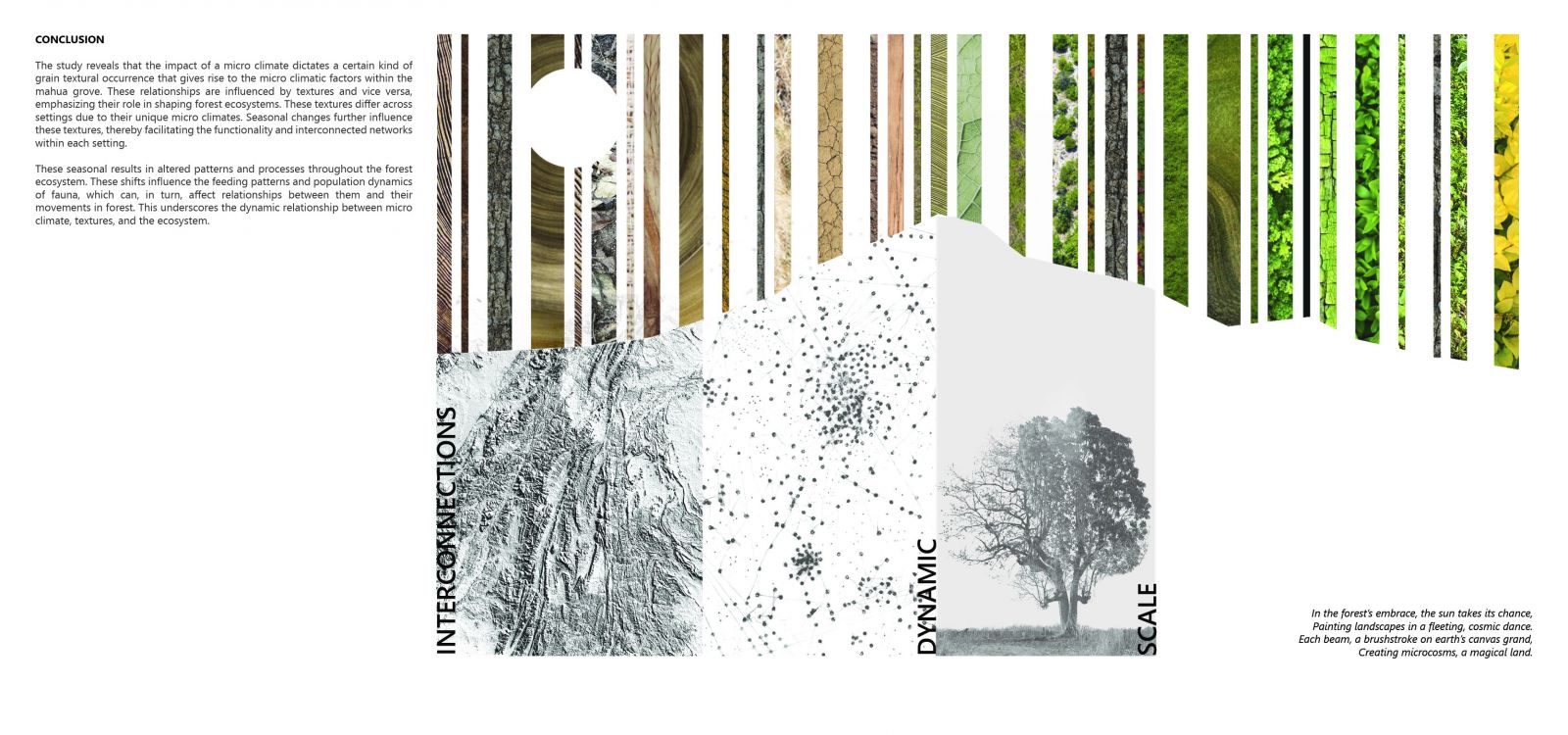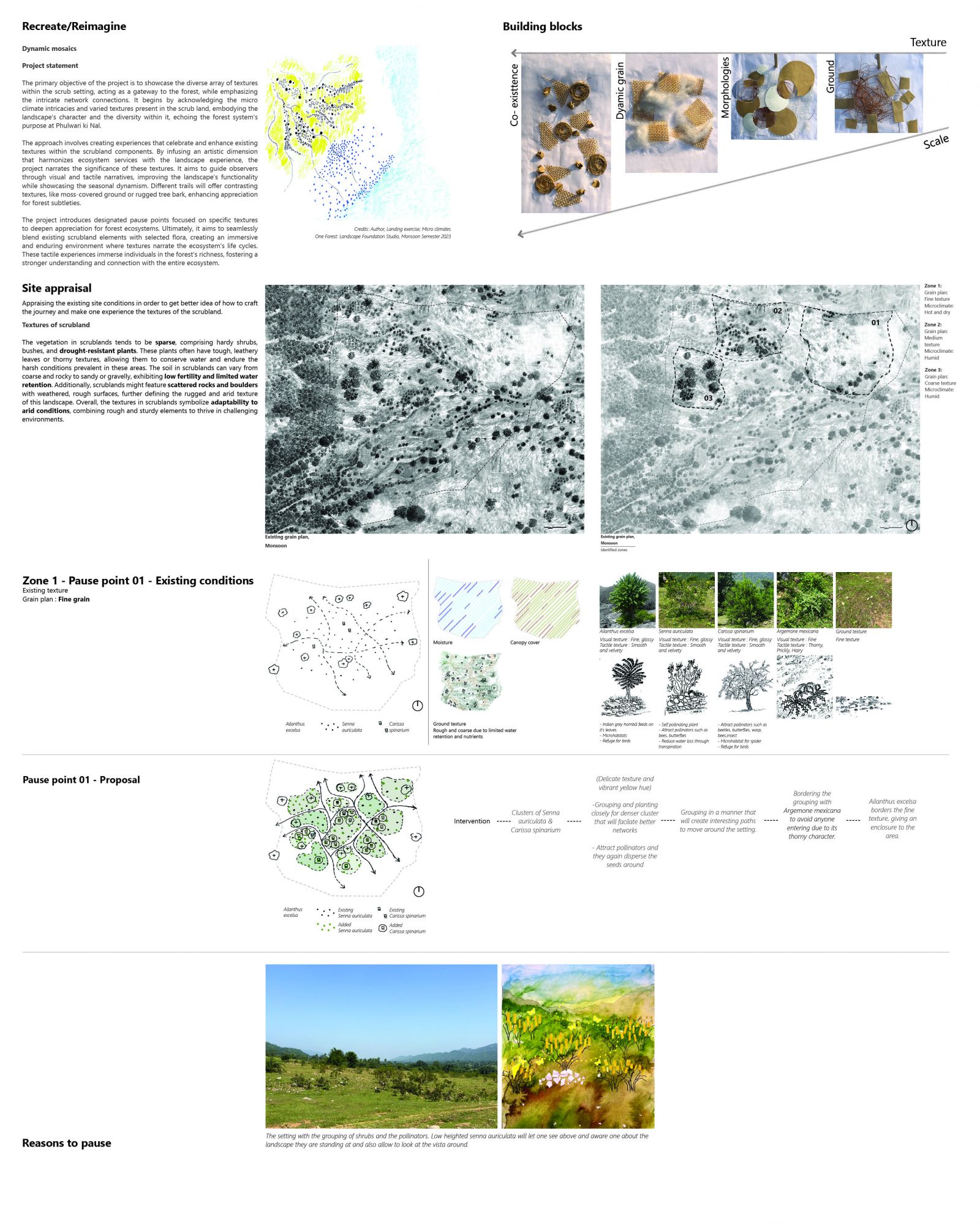- Student ZALAK SATYEN PANDYA
- Code PLA23449
- Faculty Architecture
- Tutor/s Nikhil Dhar,Rushika Khanna,Prasanna Mattikop,Priyal Shah
Keywords: Textures, functionality, associations, networks In forest ecosystems, various elements are intricately linked through complex ecological relationships, where textures and features of each organism contribute to their survival and ecological function within their habitat. Within the complex natural world, textures extend beyond surface appearances, bearing deeper significance.
It refers to the tactile and visual qualities of a surface. It encompasses the way a surface looks and feels. These textures result from the interplay of both biotic and abiotic factors. Biotic factors, including the diversity of plant and animal species, influence attributes such as tree bark textures and leaf surfaces. Abiotic factors, such as climate and geological processes, further shape these physical conditions. Textures act as both the stage and the performers in an ecological setting which in turn form necessities of habitats for various species to thrive.
The primary objective of investigating the functional significance of textures within a forest ecosystem, ranging from macro to micro scales, is to establish a systemic understanding of the factors that drive and shape textures in this natural setting. This comprehensive analysis aims to connect the dots from the positioning of the setting to the myriad influencing factors that can be traced through the intricate networks of textures. It will attempt to unravel the underlying mechanisms that lead to the emergence of textures within the forest and to view these textures as integral components of a dynamic, interconnected ecosystem.
The intricate relationship between the presence of orchids on Mahua trees showcases the profound impact of texture within the forest ecosystem. Orchids, rare occurrences in the forest, establish a strong bond with the rough texture of Mahua bark, using it as a support system for their aerial roots. As the bark gradually decomposes, it enriches the soil, furthering the sustenance of these connections. Orchids indirectly enable habitat providers for flying squirrels, a threatened species in the forest, by attracting insects through their smooth, delicate, and attractive textures. Flying squirrels also share a direct relationship with Mahua trees, utilizing the rough surface of the tree's bark for movement and its fruits for sustenance.
Can we look at the Mahua, orchids, or the flying squirrel in isolation? The study reveals that the impact of a micro-climate dictates a certain kind of grain textural occurrence that gives rise to the micro-climatic factors within the Mahua grove. These relationships are influenced by textures and vice versa, emphasizing their role in shaping forest ecosystems. Additional work : Portfolio

